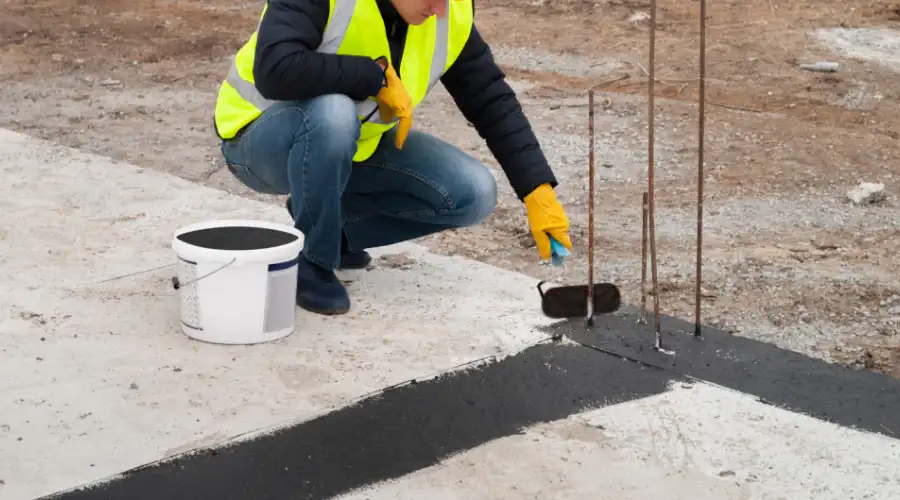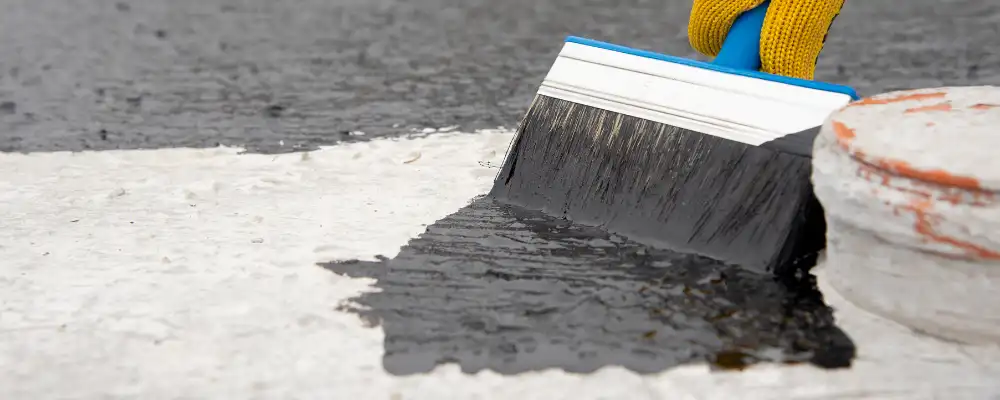Waterproofing a basement from the inside is the most frequently recommended remedy by landlords who need to protect their homes from dampness. You could solve a lot of problems from the inside of the basement, but having a clear view of the whole problem and the different methods is a significant issue. Techniques for waterproofing from the inside can help cut down on water seeping in from outside pressure, but they might not always be a permanent fix.
This guide is here to help you understand the basics, look at common reasons basements get wet, explore effective solutions, figure out the costs, learn how to maintain it, and compare doing it inside versus outside.
Overview of Interior Basement Waterproofing
Interior basement waterproofing involves controlling water and humidity that enter through basement foundation walls and drain systems. Common methods include installing sump pumps, French drains, or an interior drainage system to divert water away from the basement.
Additionally, waterproof coatings or sealants are applied to walls and floors to prevent moisture infiltration. This approach is cost-effective and less labor-intensive compared to exterior solutions.
However, it may not address the underlying causes of water infiltration, such as external drainage issues or structural cracks, which need to be considered for comprehensive long-term protection.
Common Causes of Basement Water Infiltration
Water infiltration into the basement can be initiated by various factors, leading users to undergo a more challenging and costly repair process. The most common reasons are listed below,
- Cracks in Foundation Walls
As time passes, foundation walls may develop several cracks through which water can seep through.
- Poor Exterior Drainage
When gutters, as well as downspouts, become fully clogged, or the grading is wrongly done, it directs the water towards the foundation, causing the basement to leak.
- High Water Table
In the presence of a high water table, i.e., when the level of an underground water body is above the bottom of the foundation, the rainwater can penetrate the porous building material.
- Faulty Window Wells
Basements without proper sealing of windows or poorly drained window wells can become easily waterlogged, especially when it rains heavily.
- Pipes and Plumbing System Leaks
Leaks from pipes situated along the underground basement or close to the foundation will lead to the localised penetration of water as well as excessive moisture.
- Condensation
Very high temperatures and sudden changes in the air temperature can cause condensation (excess water) to form on the walls of the basement, which would cause moisture on the walls of the basement and mold to grow.
If the mentioned issues are dealt with at an early stage, no severe damage would be caused, and it would be much more cost-effective to repair any existing problems.
Effective Waterproofing Methods for a Basement from the Inside

Here are the most effective interior basement waterproofing methods,
1. Sump Pump Installation
A sump pump is installed at the lowest point of the basement. It collects water entering the basement and discharges it outside, preventing water accumulation. This system is highly effective in keeping your basement dry, especially during heavy rainfall.
2. French Drains
French drains consist of perforated pipes laid around the perimeter of the basement. These drains collect groundwater that seeps through the foundation walls and lead it to a sump pump, which discharges the water outside. This method is excellent for preventing moisture from reaching the basement walls.
3. Perforated Pipes
Another method involves digging trenches along the sides of the basement walls and laying perforated pipes beneath the floor. These pipes help direct the water that enters the basement to the sump pump system.
4. Waterproof Coatings and Sealants
Applying waterproof chemicals coatings and sealants on basement walls and floors helps create a barrier against water. These materials seal cracks and pores, preventing water infiltration and protecting the structure from dampness.
5. Waterproofing Membranes
Membranes are used to prevent moisture vapor from entering the basement. These membranes are typically applied to walls and floors to provide an additional layer of protection.
6. Polyurethane/Epoxy Injections
For foundation cracks, polyurethane or epoxy injections are used to seal and fill the cracks, ensuring no water can seep through.
These interior waterproofing methods are cost-effective and reliable for maintaining a dry, healthy basement.
Pros and Cons of Interior Waterproofing
| Pros | Cons |
|---|---|
| Budget-friendly option compared to exterior waterproofing. | Does not fix the causes of external water infiltration; it only deals with the outward symptoms. |
| No trench is required, thus faster and less invasive installations. | Systems like sump pumps and drainage channels require regular inspection, cleaning, and maintenance to function effectively. |
| With reduced downtime and disruption, you can complete this task in a few days. | During extreme weather events or major drainage failures, interior systems may struggle to handle large volumes of water. |
| A basement with less humidity is less likely to develop mold and mildew. | Only deals with water that enters and does not address sources of water entry, such as drainage systems in poor condition. |
| By dealing with excess moisture, you can improve air quality, getting rid of musty odors and dampness. | Components like sump pumps depend on electricity and can fail during power outages unless a backup system is in place. |
Maintenance and Prevention Tips
The right maintenance and the use of preventive methods are two necessary things that will cause waterproofing systems to last longer.
- Regular Inspections: Always look out for cracks, leaks, or wetness, especially after heavy rains. Identifying the problem in its early stages can reduce costs.
- Clean Gutters and Drains: Downpipes and gutters must be debris-free to prevent the accumulation of water around the house’s foundation.
- Proper Grading: It is a priority for homeowners to regularly maintain the grade of their landscape in a way that the ground slopes away from the building to avoid water gathering near the walls.
- Seal Cracks Promptly: If the cracks are visible in the building, they should be sealed immediately with appropriate sealants, hence the occurrence of water flow will be prevented.
- Monitor Humidity Levels: Dehumidifiers can be used to avoid the problem of moist air in the basement and bathroom, thus lowering the possibility of mold.
- Check Sump Pumps: It is a common practice among households to regularly test the primary sump pumps and backup systems during wet conditions.
- Reapply Coatings: Depending on the material, reapply waterproof coatings or membranes, as per the manufacturer’s instructions.
These are the measures that will preserve your basement’s waterproofing systems and ensure that they are not exposed to the effects of water.
Comparing Interior vs. Exterior Waterproofing
| Factor | Interior Waterproofing | Exterior Waterproofing |
| Approach | Focuses on addressing water inside the basement | Involves digging around the foundation and applying barriers outside. |
| Cost | Generally, more affordable and less labor-intensive. | More expensive due to excavation, labor, and materials. |
| Effectiveness | Works for minor water seepage but doesn’t address the root cause. | Offers long-term protection by tackling the external water sources. |
| Maintenance | Requires ongoing maintenance, especially for sump pumps. | Minimal maintenance is required once installed, although repairs can be costly. |
| Installation Time | Faster and less disruptive, usually completed within a few days. | It takes longer due to excavation and foundation work. |
| Long-Term Solution | May require reapplication of coatings and sealants. | More durable and permanent, addressing both symptoms and causes. |
| Best for | Suitable for existing basements with minor leaks or moisture; great retrofit option. | Ideal for new builds or severe water issues, where full access to foundation walls is possible. |
Conclusion
Waterproofing a basement from the inside is a practical and often cost-effective solution for managing water intrusion, especially in existing homes where exterior access is limited. While interior methods like sealants, drainage systems, sump pumps, and crack injections don’t stop water from reaching the foundation, they effectively control moisture and prevent damage within the basement. Protect your home from water damage by choosing the right waterproofing solution, whether interior or exterior. At Brick & Bolt, we offer expert waterproofing services for both interior and exterior applications, customised to your specific needs.

